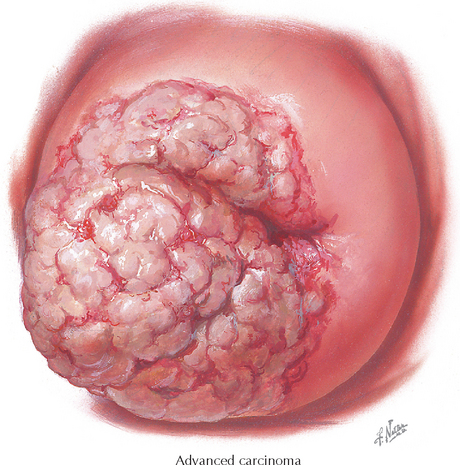Chapter 100 Cervical Cancer
INTRODUCTION
Description: Almost all cancers of the cervix are carcinomas—85% to 90% are squamous carcinoma and 10% to 15% are adenocarcinoma.
ETIOLOGY AND PATHOGENESIS
Causes: Strongly linked to some serotypes of human papillomavirus (HPV; 99.7% of all cancers have oncogenic HPV DNA detectable) and associated with early sexual activity and multiple partners.
CLINICAL CHARACTERISTICS
DIAGNOSTIC APPROACH
Workup and Evaluation
Laboratory: An assessment of renal function is appropriate if ureteral compromise is suspected (advanced disease).
Imaging: Chest radiograph, intravenous pyelogram, and computed tomographic or magnetic resonance imaging (MRI) scans are used to assess extent of disease and to assist in staging. (As experience grows, magnetic resonance imaging is displacing other imaging modalities because of its ability to assess lymph nodes [72% to 93% accuracy] and possible tumor spread.) Staging is currently clinical and relies primarily on clinical examination and the status of the ureters.




